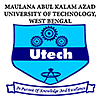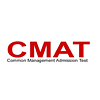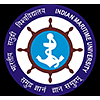PGDMLT Syllabus and Subjects

PGDMLT course curriculum includes subjects such as clinical chemistry, microbiology, cytotechnology, etc., among others, which aid in providing advanced knowledge of the subject and understanding of its practical application in the industry. The PGDMLT job scope is extensive, ranging from technical assistant and medical officer to research associate.
Table of Contents
- Semester Wise PGDMLT Syllabus
- PGDMLT Subjects
- PGDMLT Course Structure
- PGDMLT Teaching Methodology and Techniques
- PGDMLT Projects
- PGDMLT Books
Semester Wise PGDMLT Syllabus
The PGDMLT syllabus covers all the topics needed to understand the course. The PGDMLT course is divided into four semesters and covers a wide range of topics. The topics given for the PGDMLT each semester are listed below:
PGDMLT First Year Syllabus
The first-year subjects for PGDMLT is listed in the table below, divided into the first and second semesters:
|
Semester I |
Semester II |
|
Introduction to Clinical Bacteriology |
Haematology and Blood Banking |
|
Microscopy |
Histopathology and Cytology |
|
Sterilization and Disinfection |
Community Medicine |
|
Immunological Disorders & Vaccines |
Body Fluid Analysis: Collection, Physical, Chemical and Microscopic |
|
Food Chemistry |
Analytical Techniques |
|
Laboratory diagnosis of infectious diseases |
Practical |
PGDMLT Second Year Syllabus
The second-year subjects for PGDMLT are listed in the table below, divided into the third and fourth semesters:
|
Semester III |
Semester IV |
|
Biochemistry II |
Pathology-I |
|
Seminar on Hospital Training |
Pathology-II |
|
Project Work |
Practical |
|
- |
Elective |
PGDMLT Subjects
Over the course of two years, students in the PGDMLT course get a broad understanding of a range of subjects. The course is structured into core and elective topics for the PGDMLT. The following subjects will be covered in the PGDMLT course:
PGDMLT Core Subjects
The following are the core PGDMLT subjects that all PGDMLT students must take:
- Biochemistry
- Haematology and Blood Banking
- Histopathology and Cytology
- Immunology
- Instrumentation and analytical techniques
- Principles of Clinical Bacteriology, Virology & Mycology
PGDMLT Elective Subjects
The following are the elective PGDMLT subjects that all can take:
- Food Chemistry
- Forensic Chemistry & Toxicology
- Biostatistics
- Laboratory safety and management
- Energy and Environment
- Bioethics & Biosafety
PGDMLT Course Structure
The PGDMLT course is designed in a way that supports students' learning, exposure to practical experience, and development of critical skill sets. The sections of the PGDMLT course are as follows:
- IV Semester
- Core Courses
- Elective Subjects
- Coursework
- Seminars
- Project Work
PGDMLT Teaching Methodology and Techniques
One must have a thorough understanding of PGDMLT teaching methods and strategies in order to completely understand the course. The PGDMLT course combines traditional lectures with projects, seminars, training, and other forms of action-based learning to increase the curriculum's effectiveness. A variety of teaching techniques are used in the PGDMLT course, some of which are described below:
- Internship/Training
- Projects
- Practicals
- Seminars
- Research Projects
- Regular Lectures
PGDMLT Projects
Team or individual projects gain a significant amount of focus in the PGDMLT course since they give teachers the chance to assess students' performance and subject understanding. Some of the most common projects for PGDMLT are listed below:
- Comparison Evaluation of MCIM and PAIDEC Kits in Clinical Microbiology
- Detection of Pseudohyponatremia in Pediatric Patients with Hyperlipidemia
- Consistency of NGS Analysis in the Identification of Mutant HIV
- The Role of Hyperglycemia in CD4 T Cell Death
PGDMLT Books
The books for the PGDMLT give students a broad overview of the subject matter as well as a detailed analysis of their particular areas of expertise. The following are some of the books for the PGDMLT course:
|
Name of Book |
Author |
|
Microbiology and Immunology |
Subhash Chandra Parija |
|
Essential of Clinical Pathology |
Kawthalkar S M |
|
A Handbook of Practical Immunology |
GP Talwar |
|
Medical Laboratory Technology |
R. Sood |








